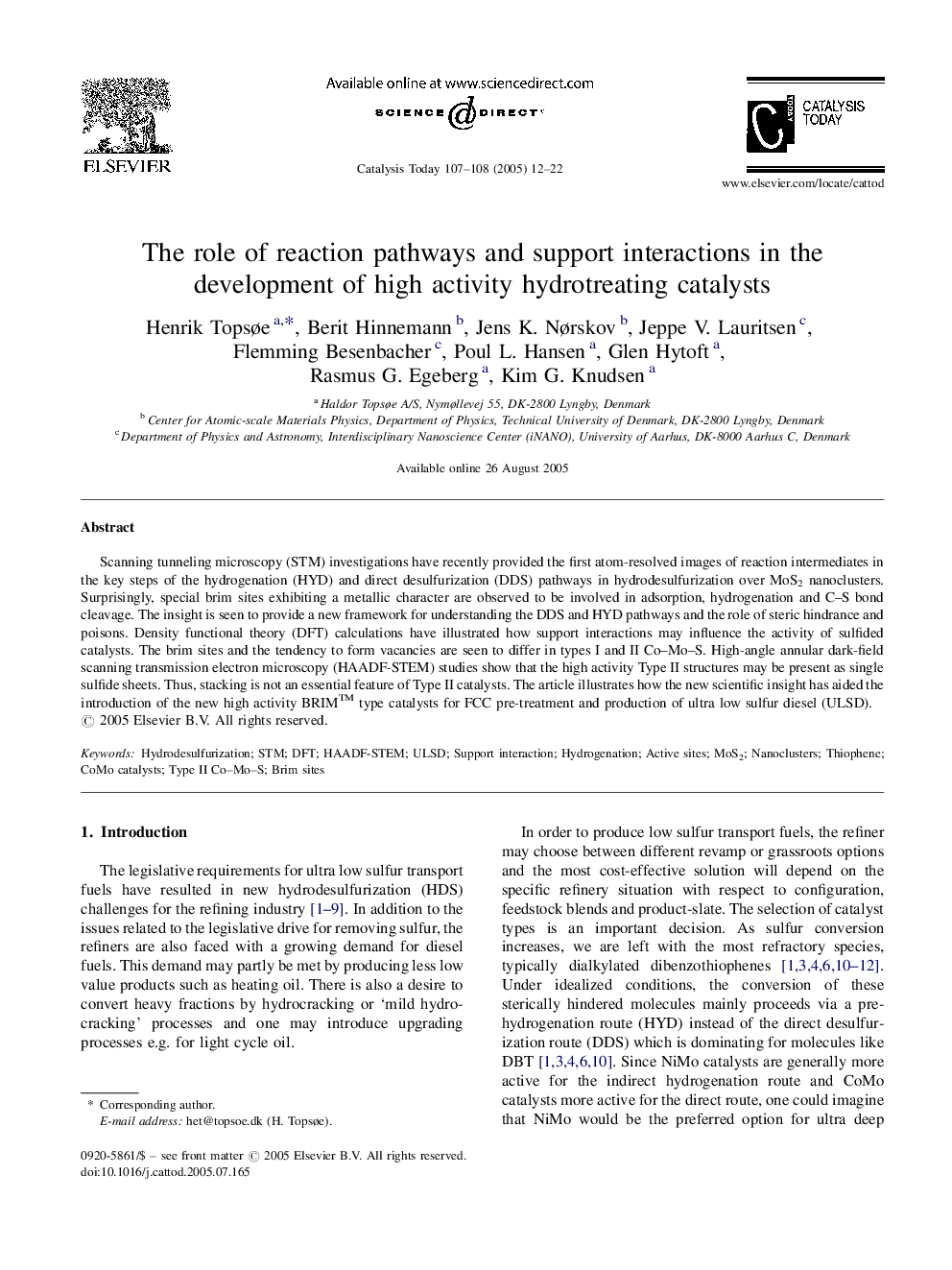| کد مقاله | کد نشریه | سال انتشار | مقاله انگلیسی | نسخه تمام متن |
|---|---|---|---|---|
| 9610161 | 47163 | 2005 | 11 صفحه PDF | دانلود رایگان |
عنوان انگلیسی مقاله ISI
The role of reaction pathways and support interactions in the development of high activity hydrotreating catalysts
دانلود مقاله + سفارش ترجمه
دانلود مقاله ISI انگلیسی
رایگان برای ایرانیان
کلمات کلیدی
موضوعات مرتبط
مهندسی و علوم پایه
مهندسی شیمی
کاتالیزور
پیش نمایش صفحه اول مقاله

چکیده انگلیسی
Scanning tunneling microscopy (STM) investigations have recently provided the first atom-resolved images of reaction intermediates in the key steps of the hydrogenation (HYD) and direct desulfurization (DDS) pathways in hydrodesulfurization over MoS2 nanoclusters. Surprisingly, special brim sites exhibiting a metallic character are observed to be involved in adsorption, hydrogenation and CS bond cleavage. The insight is seen to provide a new framework for understanding the DDS and HYD pathways and the role of steric hindrance and poisons. Density functional theory (DFT) calculations have illustrated how support interactions may influence the activity of sulfided catalysts. The brim sites and the tendency to form vacancies are seen to differ in types I and II CoMoS. High-angle annular dark-field scanning transmission electron microscopy (HAADF-STEM) studies show that the high activity Type II structures may be present as single sulfide sheets. Thus, stacking is not an essential feature of Type II catalysts. The article illustrates how the new scientific insight has aided the introduction of the new high activity BRIM⢠type catalysts for FCC pre-treatment and production of ultra low sulfur diesel (ULSD).
ناشر
Database: Elsevier - ScienceDirect (ساینس دایرکت)
Journal: Catalysis Today - Volumes 107â108, 30 October 2005, Pages 12-22
Journal: Catalysis Today - Volumes 107â108, 30 October 2005, Pages 12-22
نویسندگان
Henrik Topsøe, Berit Hinnemann, Jens K. Nørskov, Jeppe V. Lauritsen, Flemming Besenbacher, Poul L. Hansen, Glen Hytoft, Rasmus G. Egeberg, Kim G. Knudsen,